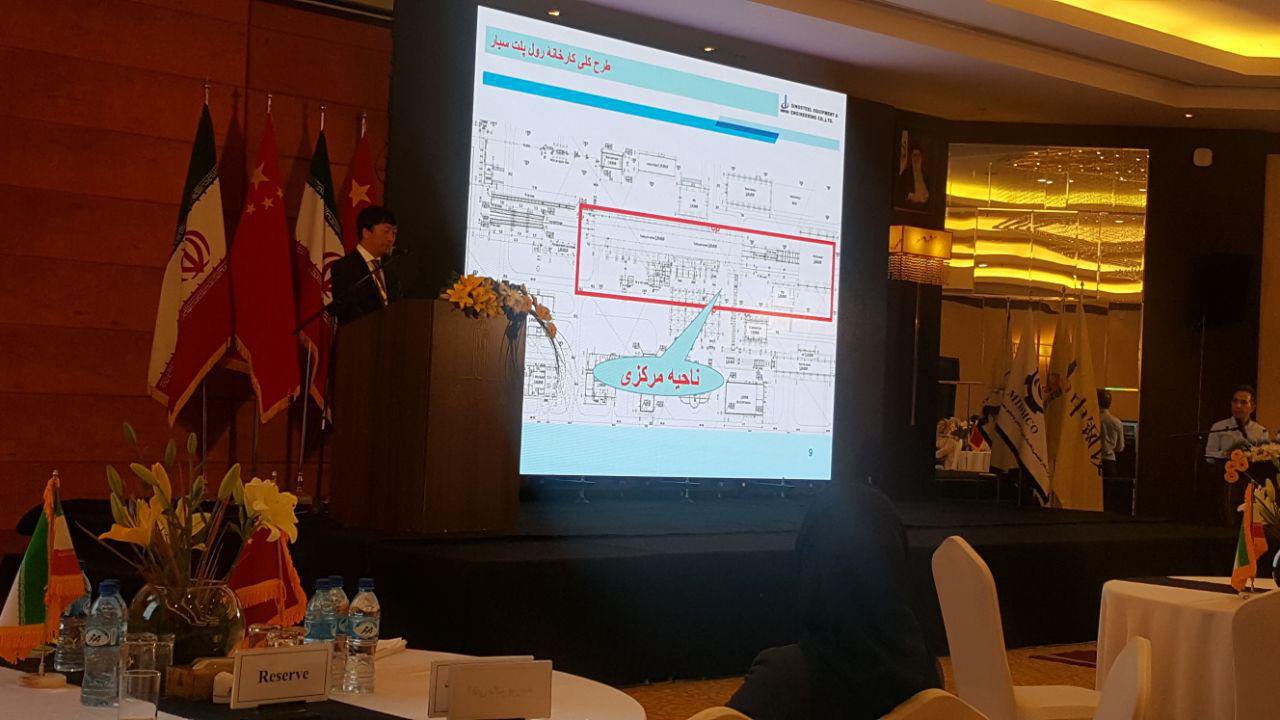


 BACK
Sinosteel Presents Pelletizing Tech in Tehran
BACK
Sinosteel Presents Pelletizing Tech in Tehran
Source: Financial Tribune

Sinosteel Presents Pelletizing Tech in Tehran
China’s Sinosteel Corporation presented its pellet production technology during a ceremony held in Tehran with Iranian steel industry officials and players in attendance.
The technology, called travelling grate pelletizing, boasts of superior efficiency.
“Our pelletizing technology is superior to all other international rivals–such as Germany–in environment-friendliness as well as production and energy efficiency,” Sinosteel MECC’s General Manager Wang Jian told Financial Tribune on the sidelines of the event held on Saturday.
The technology was employed for the first time in Iran in Sirjan Iranian Steel Company for a 2.5-million-ton per year pelletizing plant in March 2017. This was the first traveling grate pelletizing plant ever supplied by a Chinese company, according to Sinosteel.
Describing China’s environmental policies as the most robust in the world, Wang underscored Sinosteel’s commitment to developing green industrial technologies such as traveling grate.
Founded in 1993, Sinosteel Corporation is a central state-owned enterprise, operating primarily in mining, trading, equipment manufacturing and engineering under the supervision of China’s Assets Supervision and Administration Commission. The company operates 86 subsidiaries, of which 63 are in China and 23 abroad.
“As China’s largest engineering company, Sinosteel is ready to cooperate in all related projects in Iran,” Wang added.
The Chinese corporation has so far undertaken 150 projects around the world. Three of them were in Iran and at the request of Middle East Mines and Mining Industries Development Holding Company in both pelletizing and steelmaking.
As well as the plant at SISCO, another 2.5-mtpy pellet plant at Zarand Iranian Steel Company was supplied and engineered by Sinosteel using a mature grate-kiln-cool process. The Chinese firm undertook installation of both mechanical and electrical equipment at the plant, in addition to staff training and operation, utilizing a team of 300 workers and 50 technicians, according to company data.
Sinosteel also participated in developing the steelmaking process at ZISCO.
“The three projects came on stream with €700 million worth of investment,” MIDHCO’s Managing Director Ali Asghar Pourmand said, adding that 85% of which were funded through Iran-China financing.
Wang pointed to Iran as a major market in the Middle East and emphasized that although Sinosteel does not directly involve itself in investments, it has attracted many Chinese firms to invest and work in Iran even under the international nuclear sanctions against the country.
“Further investments can be attracted to Iran in the course of China’s ‘One Belt, One Road’ initiative,” the Sinosteel official said, adding that 9 million tons of steel capacity have so far been established in the countries included in the scheme by China.
The initiative, first put forward on October 2013 by Chinese President Xi Jinping, includes several corridors through land and sea, including the New Silk Road rail route. The route would become a tailwind for transport of goods and energy between Iran and China, which have set a long-term bilateral trade target of $600 billion per year.
“China exports about 46% of its steel production to countries along the route,” said Huang Dao, director of China Iron & Steel Association’s development and environmental protection department, who was also present at the event.
This highlights the initiative’s importance for the Chinese steel industry.
China signed a contract with Iran in Tehran back in July to finance the electrification of a strand of the New Silk Road in Iran—a 926-km railroad from Tehran to the eastern city of Mashhad in Khorasan Razavi Province with a $1.5 billion loan.
The Silk Road refers to land-based component that together with the oceanic Maritime Silk Road forms One Belt, One Road.
“China produced 808.37 million tons of steel in 2016, indicating a 41% growth compared to the year before. We have also produced 419 million in the first half of this year,” Huang said, adding that China’s shipments abroad in 2016 dropped by 28% to 356 million tons.
“The Chinese government aims for the industry to have a larger presence in steel production and its downstream sectors abroad, and is ready to offer production technologies to clients worldwide,” Huang concluded.
https://financialtribune.com/articles/economy-business-and-markets/74880/sinosteel-presents-pelletizing-tech-in-tehran